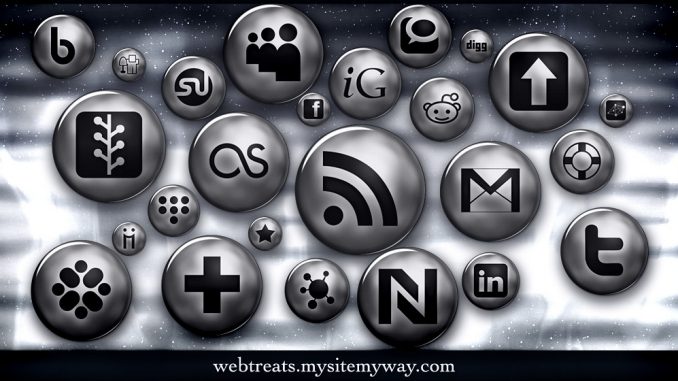
The prominence of platforms has created “simultaneous utopia and dystopia” (Orlowski, 2020, 1:21:45). On the one hand, platforms have brought such good in the world, from connecting people across the globe to providing countless convenient services. On the other hand, however, the move towards a platform society has caused social media addictions and increased mental health issues, especially amongst young people. Additionally, algorithms have facilitated the spread of fake news, which has proven to be detrimental to society. It is those issues that the Netflix documentary, The Social Dilemma (2020), directed by Jeff Orlowski, seeks to address. At its core, The Social Dilemma argues for multi-stakeholder governance of digital platforms in a world that is increasingly moving towards platform societies. A multi-stakeholder approach suggests governance of platforms by numerous stakeholders, including the platforms themselves, governments, users, and shared global services and operations (Internet Society, 2014). Through interviews with people who were once in high positions at major tech companies, as well as dramatisations, the documentary serves as a warning of the existential threat that will face society should platforms continue running as they are now.
YOU ARE THE PRODUCT

A lasting impression left on the viewer after watching The Social Dilemma is its recurring message that “you are the product” (Orlowski, 2020, 13:00). The business models of platforms centre around advertisers, which is how they generate profit. In order to please advertisers and prevail over competition, platforms must ensure that users keep coming back and maintain engagement. The documentary likens the tactics that keep users addicted, to the manipulation of human psychology in magic. Tristan Harris states that “Magicians were almost like the first neuroscientists and psychologists,” as they understand “some part of your mind that we’re not aware of” (22:30). He also says that students of the Stanford Persuasive Technology Lab learn persuasion technology which is a way to modify human perception and behaviour without the user even knowing. Companies ensure that they achieve all of these goals through algorithms that collect large amounts of data about their users. In ‘The Fog of Freedom’, Christopher M. Kelty presents the early views that the internet was the key to increasing freedom in society because “these tools engage our individual capacities to think, create, and manipulate the world” (Kelty, 2014, p. 198). While in some ways, the World Wide Web (WWW) has allowed for freedom in expressing interests, connecting on a global level and having a larger domain in which to hold discussions, it is ironic that it simultaneously reduces our freedom by compromising our autonomy over our own minds and behaviours. In the documentary, we see this exploitation through the dramatisation of a family. While the scenes can be exaggerated, such as when the youngest daughter breaks a kitchen safe to reach her phone because she couldn’t make it through dinner without it, the film does not fail to shine a light on the way that users’ attention and lives are bing exploited by platforms. This happens on such a large scale that Picard and Pickard (2017) argue that in future policymaking, the public interest should take precedence over the private interest of an incredibly profitable business model.
MENTAL HEALTH

The Social Dilemma also argues that this addiction to social media platforms is detrimental to mental health, particularly that of young people. In a dramatised scene of the documentary, the youngest daughter in the family is taking selfies with filters and deleting them, looking insecure and hoping for validation through likes (Orlowski, 2020, 38:00). Also included in the documentary is a news report which reads “these cosmetic procedures are becoming so popular with teens, plastic surgeons have coined a new syndrome for it – Snapchat dysmorphia – with young patients wanting surgery so they can look more like they do in filtered selfies” (4:55). However, The Social Dilemma fails to highlight how hate speech online is also contributing to declining mental health. This is somewhat expected as there is a clear lack of diversity in the cast of the documentary who are mostly previous Silicon Valley employees, which directly reflects the lack of diversity in Silicon Valley that Lusoli and Turner (2020) reference. However, this proves that platforms are unequipped to completely self-govern as they are deciding things for groups of society that they know nothing about and, in turn, causing harm to those communities. This is all reflected in the statistics that are shown in the documentary. For example, the number of American teenage girls aged 15-19 being admitted to hospital for self harm every year is up 62% since 2013 and the numbers for girls aged 10-14 are up 189% (Orlowski, 2020, 41:00).
Of course, this is a global issue. Click here to see Australian mental health statistics and notice the trends for young people increase after the early 2010s when social media became popular.
FAKE NEWS
“Is Social Media Harmful? Answered by Tim Kendall” by Startup to Storefront is licensed under CC BY

When discussing an existential threat to society, The Social Dilemma does explore the above topics, however, its main focus lies in the spreading of fake news and the influence that has on social and political unrest. Jaron Lanier poses an analogy about Wikipedia. He says that Wikipedia shows the same page to everyone who clicks on it and then poses the question, “Think about if Wikipedia said we’re going to give each person a customised definition and we’re going to be paid by people for that” (Orlowski, 2020, 55:00). That is exactly what’s happening on platforms like Google and Facebook. The algorithm causes people to create their own echo chamber, The Social Dilemma likening this to each person being in “their own Truman show” (56:00). Subsequently, everyone is operating on a different set of facts. This is displayed incredibly eerily in the documentary as the teenage boy becomes obsessed with his news feed and the camera slowly zooms out to show billions of screens, all acting as a ‘Truman Show’ for each particular person while eerie music plays in the background. This is an effective device to get people to re-evaluate how this applies to their own experience of the internet. One strong example of the algorithm at work is the spreading of misinformation of COVID-19 to people who had shown interest in conspiracy theories prior, which has been dangerous in the midst of a global pandemic and has also caused extreme polarisation and unrest in society. Another concern raised in the documentary is the threat of a dictator or tyrant using social media algorithms to their advantage. They use the example of Myanmar in which the military used Facebook to incite hatred and violence against the Rohingya Muslims, which resulted in “mass killings, burning of entire villages, mass rape,” and led to “700,000 Rohingya Muslims having to flee the country” (1:07:00). When asked what existential threat is, The Social Dilemma argues that it is “technology’s ability to bring out the worst in society” (1:18:00), which, they suggest, can lead to “in the short term, civil war” (1:20:00) and, in the long term, the destruction of human civilisation due to the ignorance of climate change and the destruction of democracy (1:21:00). There have been self-regulatory practices put in place by platforms, such as the Facebook Oversight Board, which was involved in the indefinite ban of the account of former US President, Donald Trump. Gillespie (2017) suggests some reasons that platforms have begun to take action, including outside pressures as well as the threat of advertisers withdrawing or users leaving due to a platform’s poor reputation (254-255). However, to reach a public interest over private interest goal (Picard & Pickard, 2017), platforms cannot be left entirely to self-govern as there is not much monetary or business centred benefit to prioritising public wellness and therefore, some form of multi-stakeholder governance is required.
A LACK OF GLOBAL POLICY EXPLORATION

Despite The Social Dilemma’s focus being on the need for greater regulation of platforms, it remains US-centric, failing to explore what this means in a globalised WWW. In ‘The Platform Society as a Contested Concept’ (2018), van Dijk states that “we need to look at the role online platforms play in organizing societies in a globalising world order” (p. 7) and poses the question, “who is or should be responsible for anchoring public values in societies that are increasingly organized through online systems?” (p. 7), which is the dilemma of regulation. These discrepancies over internet governance due to values and political ideologies have led to the idea of the “Four Internets” (O’Hara & Hall, 2018) or the “splinternet” (Flew, et. al., 2019, p. 46). These include the Silicon Valley “Open Internet”, the “bourgeois” internet, the “authoritarian internet”, and the “platformised internet” (O’Harra & Hall, 2018, p. 1). This means that “users have profoundly different experiences of Internet use” based on their part of the world (Flew, et. al., 2019, p. 46), which raises concerns for global platforms. The Social Dilemma’s exploration of possible regulatory solutions to the internet’s problems would have been enriched and
more effective if it looked outside of “domestic policies”and considered “global policy” (Picard & Pickard, 2017, p. 5).
Click here to read more about the four internets.
Ultimately, The Social Dilemma sends a persuasive message as to why platform regulation is necessary. It also makes clear that self-regulation alone would not be effective enough to combat the exploitation of human lives, the detrimental impacts on mental health, and the existential threat to society of fake news because there is not enough incentive for the companies to change that drastically. Therefore, it calls for some form of multi-stakeholder governance.
![]()
REFERENCE LIST
AHealthBlog. (2012). Exercise Plays Vital
Role Maintaining Brain Health
[Image]. Flickr. Retrieved from: https://www.flickr.com/photos/healthblog/8384110298
Australian Institute of Health and Welfare.
(2021). Suicide & self-harm monitoring
data. Retrieved October 13, 2021, from
https://www.aihw.gov.au/suicide-self-harm-monitoring/data/suicide-self-harm-monitoring-data
BBC News: (2021, May 5). Facebook’s
Trump ban upheld by Oversight
Board for now. BBC News. Retrieved from:
https://www.bbc.com/news/technology-56985583
Flew, T., Martin, F., & Suzor, N. (2019).
Internet regulation as media policy:
Rethinking the question of digital
communication platform governance.
Journal of Digital Media & Policy,
10(1), 33-50. doi: 10.1386/jump.10.1.33_1
Gillespie, T. (2017). Regulation of and by
Platforms. In J. Burgess, A.E. Marwick
& T. Powell (Eds.), The SAGE Handbook
of Social Media (254-278).SAGE
Publications.
Gorwa, R. (2019). What is platform governance?.
Information, Communication & Society, 22(6),
854-871. doi: 10.1080/1369118X.2019.1573914
Internet Society. (2014). Internet Ecosystem:
Naming and addressing, shared global
services and operations, and open
standards development. Retrieved from
the Internet Society website:
https://www.internetsociety.org/internet/who-makes-it-work/
joelle L. (2014). Facebook: The Panopticon
of Modern Age [Image]. Flickr. Retrieved
from: https://www.flickr.com/photos/ilifeinicity/13048344414/in/photostream/
Kelty, C.M. (2014). The Fog of Freedom.
In T. Gillespie, P.J. Boczkowski, K.A.
Foot (Eds.), Media Technologies:
Essays on Communication, Materiality,
and Society (195-220). MIT Press.
Lusoli, A., & Turner, F. (2020). “It’s an Ongoing
Bromance”: Counterculture and Cyberculture
in Silicon Valley – An Interview with Fred Turner.
Journal of Management Inquiry, 30(2), 235-242.
https://doi-org.ezproxy.library.sydney.edu.au/10.1177%2F1056492620941075
mikemacmarketing. (n.d.). Fake News – Computer
Screen Reading Fake News [Image]. Search
Creative Commons. Retrieved from: https://search.creativecommons.org/photos/a62b633e-0f09-4b9d-9948-bfafdddcc570
Mozur, P. (2018, October 15). A Genocide Incited
on Facebook, With Posts From Myanmar’s
Military. The New York Times. Retrieved from: https://www.nytimes.com/2018/10/15/technology/myanmar-facebook-genocide.html
O’Hara, K., & Hall, W. (2018). Four Internets:
The Geopolitics of Digital Governance.
Retrieved from the Centre for International
Governance Innovation website:
https://www.cigionline.org/publications/four-internets-geopolitics-digital-governance/
Orlowski, J. (Director). (2020). The Social Dilemma
[Documentary]. The United States of America:
Netflix Original, https://www.netflix.com/au/title/81254224?s=i&trkid=13747225&vlang=en&clip=81275293
Picard, R.G., & Pickard, V. (2017). Essential
Principals for Contemporary Media and
Communications Policymaking. Retrieved
from the Reuters Institute for the Study of
Journalism: University of Oxford website:
socialautomotive. (n.d.). Automotive Social Media
Marketing [Image]. Search Creative Commons.
Retrieved from: https://search.creativecommons.org/photos/1dbc38ef-daab-40c5-9730-18ac9f498fdf
Startup to Storefront. (2020, October 16). Is Social
Media Harmful? Answered by Tim Kendall
[Video]. Retrieved from https://www.youtube.com/watch?v=dmKPdzBj5DA
van Dijk, J., Poell, T., & de Waal, M. (2018).
The Platform Society as a Contested
Concept. In The Platform Society (5-32).
Oxford Scholarship Online. doi: 10.1093/oso/9780
190889760.001.0001
webtreats. (n.d.). Free Social Media Networking
Icons – Ultra Glossy Silver Buttons [Image].
Search Creative Commons. Retrieved from https://search.creativecommons.org/photos/b78c0f3b-a740-496f-9db0-af7750acc730
Wright, K. (2019, March 4). The ‘splinternet is
already here. TechCrunch. Retrieved from: https://techcrunch.com/2019/03/13/the-splinternet-is-already-here/
9 News. (2021, July 26). Crackdown on online
COVID-19 misinformation. 9 News. Retrieved